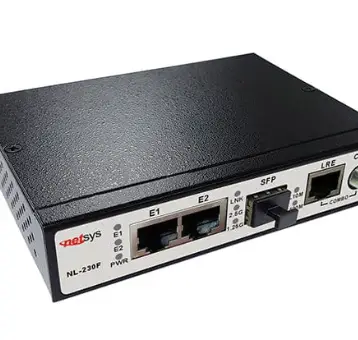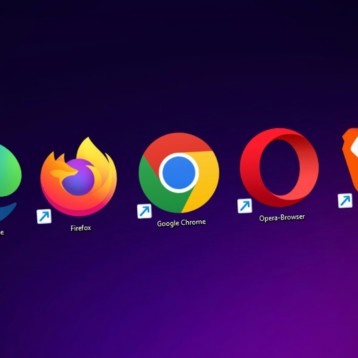
How Email Marketing Campaigns Are Still the Future of Good Digital Marketing
Is email marketing dead? Does anyone still check their inbox? The short answer is yes. And that use is still growing. In fact, in the US alone, 90% of adults use email services. That contributes to over 74 trillion emails being sent and received every year. Email newsletter marketing is far from being dead. If anything, it’s just beginning.
Especially if you consider the new capabilities which are being implemented in email marketing campaigns. New content options, increased data collection and analysis, and steadily decreasing costs for reaching larger audiences.
With newsletter capabilities only increasing, and more and more competition from great services like Amazon SES, there couldn’t be a better time to make sure that your business is futureproofed when it comes to digital marketing. However, if you’re still not convinced, here are 6 reasons why you should be jumping on the email marketing bandwagon and what you should look out for whilst you are.
Inbox Newsletters Are No Longer Just Text
That’s right, inbox newsletter apps now have a multitude of capabilities. It’s no longer just about sending large blocks of text and the occasional images. You can even insert video into newsletters now. This is why design is so important. Content capabilities are increasing, it’s not just predictions.
Make sure that your newsletters look professional. This means ensuring that you are sending them from a respected ISP and have put a lot of effort into designing them. Don’t forget that a lot of good email newsletter apps will provide high-quality templates for you to take advantage of. Also, remember that high-quality doesn’t always mean taking advantage of everything you can. Sure, it might look good to take advantage of video capabilities, but is that what your market segments are looking for?
Luckily, as 2018 comes into view, a lot of predictions out there are showing data analysis and collection as being one of the biggest expected changes in the coming year (not that it’s not already being worked on by a multitude of companies). With AWS SES, data collection is a big part of the app’s functionality. Combine this with high-quality analysis tools, and you’ve got everything you need to know about who you’re aiming content at and what content they want to see.
Not as Many People Click-through as You Think
With newsletters, marketers expect a 2-3% click-through rate. That seems pretty low, right? Well traditionally for email newsletters this has actually been a lot. However, what if you could consistently have a click-through rate of 15 – 25%? Seems improbable, but it is possible.
By ensuring that your content meets the demands of your market segments, your chances of being noticed increase greatly. In fact, due to the competition out there when it comes to getting noticed, a lot of email newsletters have started to be directed towards those at the top of the purchasing funnel. That means that instead of targeting those who have already decided to make a purchasing decision, they’re trying to spark that original inspiration needed to purchase something new.
In a World of Big Data, Amazon SES Integration Gives You What You Need

As we’ve gone into a bit above, big data is so important in modern digital marketing. Between trying to find the right audience and optimizing your campaigns to get the highest reach and conversion rate, there’s a whole lot of information to go through and organize.
Who is signing up for your newsletter? Where are they located? What do they do? What do they like? These are just a few of the questions you should be asking yourself as a digital marketer running an email newsletter campaign.
When you sign up for an email newsletter service, make sure that they offer this data analysis functionality. You can have success without it, but it makes the whole process so much quicker and easier to adopt.
Tracking ROI Isn’t as Hard as You Think
More and more businesses want to make sure that the investments they’re making are actually paying off. In other words, they’re looking for solid proof of good return on investment (ROI). If you happen to be one of those businesses, then you’re going to need software which offers you the ability to analyze your articles’ performance.
Several different metrics can be used to calculate ROI – or at least come to a conclusion regarding it. That includes click-through rate (which we mentioned earlier), conversions, and growth. You don’t just want your campaign to continually be sent to the same people, right? You want it to grow with your business because that means that you have a larger audience. Calculate ROI by assigning each of the metrics above a value and then comparing it to the amount you’re investing in your newsletter campaign.
It’s Not as Expensive as You Think

It would make sense that increased functionality would lead to increased prices, right? Luckily, that’s not actually the case. Especially when it comes to Amazon SES services like Pepo Campaigns. If you’re a small business and sending less than 10,000 emails a month, you can even set up a proper email newsletter service for free. That free price also includes 90 days’ worth of data to analyze. If you need more emails, then apps like Pepo Campaigns can also go for a little as $0.10 US for 1,000 emails and unlimited contacts.
Once They’ve Signed Up for the Newsletter, You’re Already Halfway There
Once you’ve managed to reach a person to the point that they would sign up for your newsletter, you’re already halfway there. They have already expressed an interest in your product or service. Now all you need to do is engage them.
A good email newsletter does this by showing them what they want. Moreover, with the options offered by email newsletter apps, you can now run multiple campaigns at the same time. That means sending a certain newsletter to specific demographics and a different one to others. Maybe Jerry from Detroit has shown an interest in your woolen sweaters, whilst Donna from Boston is more interested in leggings. Use your data to create those campaigns and target those types of individuals.









![10 Top Game Sites Not Blocked By School [2024 Updated]](https://thefutureofthings.com/wp-content/uploads/2024/10/image-25-358x358.png)
